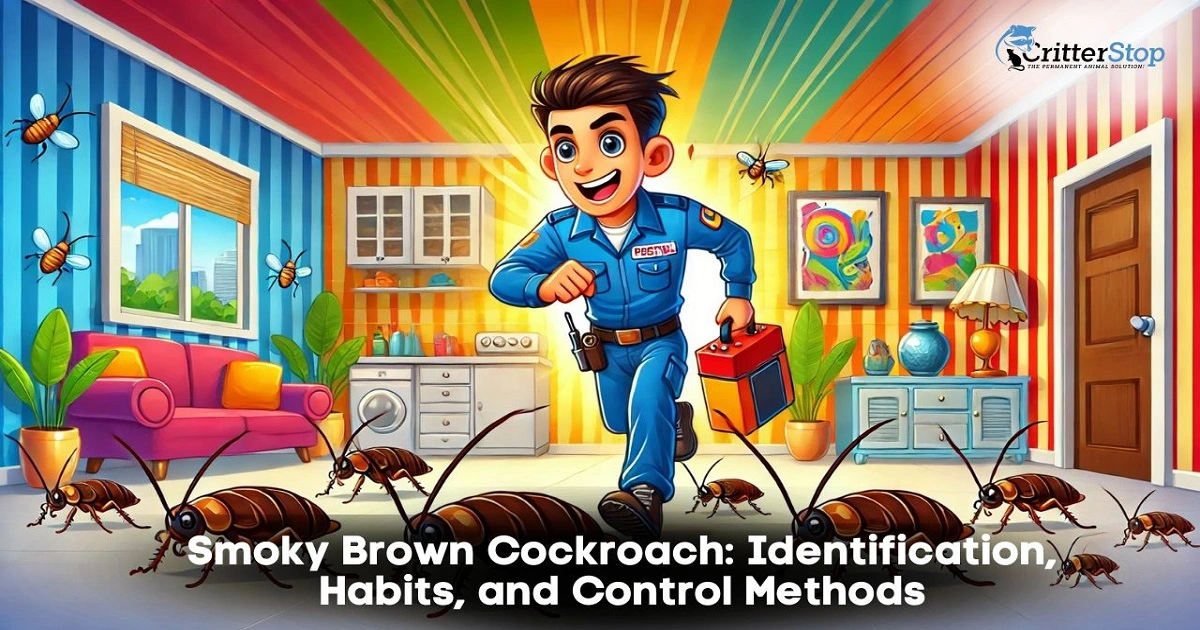
The smoky brown cockroach is commonly found in warm, humid environments and is known for its distinctive appearance. This species can often be identified by its dark brown color and long, slender body, making it a common pest in various locations, including homes and gardens. These creatures can reproduce quickly in areas where the climate is favorable, leading to infestations if left unchecked.
Understanding the habits and habitats of the smoky brown cockroach is crucial for effective pest control. They typically thrive in dark, moist areas, often hiding in cracks and crevices. Awareness of their preferred environments can help homeowners take proactive measures to prevent their entry and control populations.
Expert strategies for smoky brown cockroach infestations include proper sanitation and traps or baits. Knowledge of their lifecycle allows targeted approaches to eliminate them before they reproduce and spread.
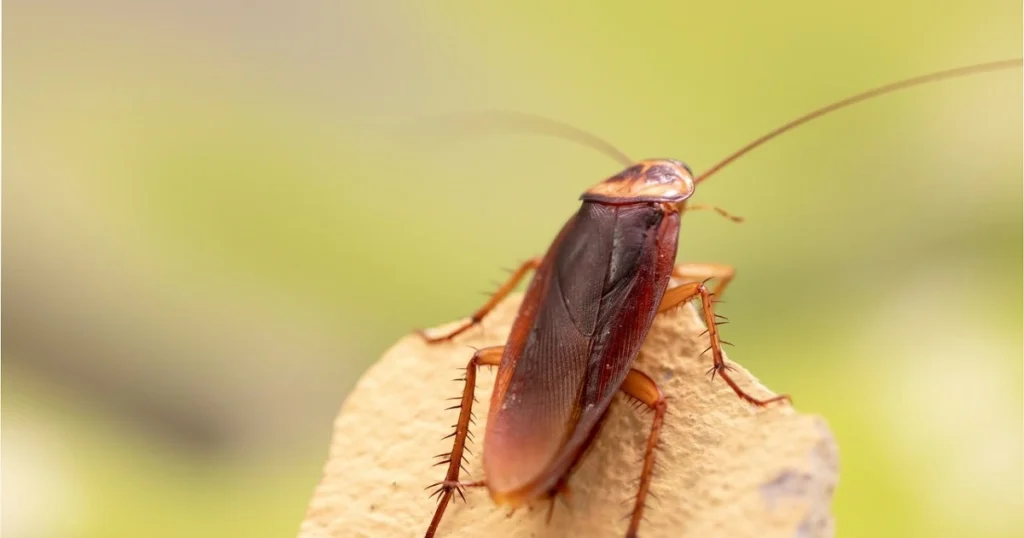
Recognizing the Smoky Brown Cockroach involves understanding its physical features, sizing compared to other roach species, and identifying its distinctive traits. Each of these points helps properly identify this insect.
The smoky brown Cockroach has a distinct coloration that contributes to its name: a rich, dark brown to almost black hue. Its body is elongated and oval-shaped, measuring about 1.5 to 2 inches long. The wings of the adult male and female cockroaches are well-developed, often extending beyond the abdomen.
The Smoky Brown Cockroach Nymph, or juvenile stage, differs significantly from adults. Nymphs are smaller, measure about 0.5 to 1 inch, and lack fully developed wings. They are lighter in color, typically brown or tan, blending in better with their surroundings. This adaptation helps them avoid predators.
When comparing the Smoky Brown Cockroach to similar species, size is an important factor. It is slightly smaller than the American Cockroach, which can grow up to 3 inches long. In contrast, the Smoky Brown Cockroach’s average size allows it to fit into tighter spaces for shelter.
The Smoky Brown Cockroach resembles the Palmetto Bug, commonly mistaken for it. While both can reach similar lengths, the Smoky Brown Cockroach has a narrower body and darker coloration. This comparison is essential for accurate identification in pest control situations.
One of the most distinctive features of the Smoky Brown Cockroach is its relatively smooth and shiny exoskeleton, which helps it camouflage in dark environments. The antennae are long and threadlike, extending beyond its body length, which enhances its sensory perception.
In addition, the Smoky Brown Cockroach has a unique movement pattern, favoring climbing surfaces due to its strong legs. This adaptability helps it thrive in high-humidity areas, often found in attics or trees. Understanding these characteristics is crucial for identifying this species accurately.
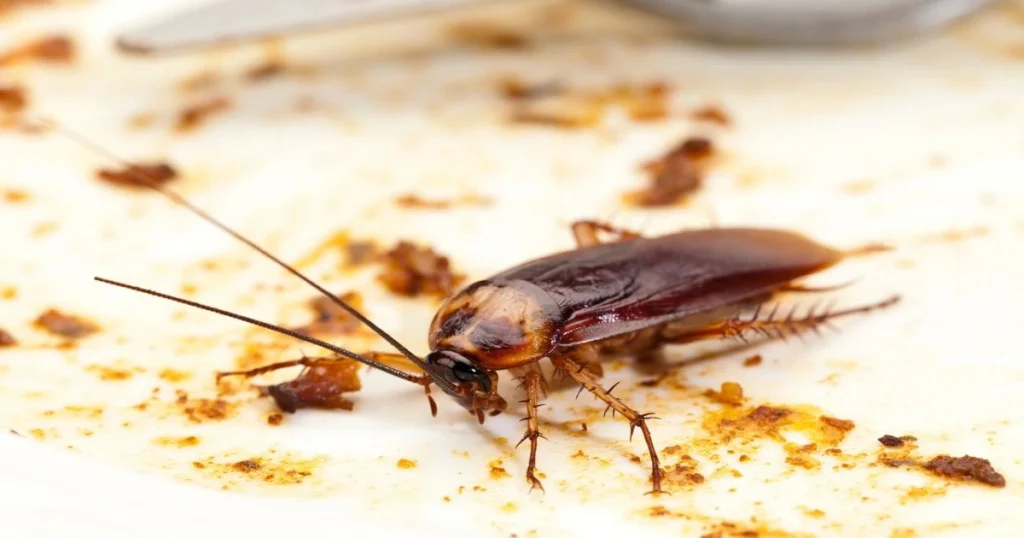
The smoky brown cockroach is commonly found in warm and humid environments. Although its distribution varies widely, it thrives primarily in regions that support its biological needs.
Smoky brown cockroaches are prevalent in the southeastern United States, especially in Florida. Their population density is higher in urban areas but also in suburban settings.
They are adaptable and thrive in various climates, though they prefer temperatures between 80°F and 90°F. Their range extends from Texas to the Carolinas, with sightings reported in Louisiana and Mississippi.
These cockroaches typically inhabit areas that provide moisture and shelter. They are often found in trees, bushes, and woody debris.
Smoky brown cockroaches favor basements, attics, and crawl spaces in human structures. They tend to hide in dark, damp areas like bathrooms and kitchens.
Outside, they are frequently seen in leaf litter and mulch beds. This association with organic materials provides them with food and shelter, essential for their survival.
The life cycle of the smoky brown cockroach involves several distinct stages, with reproduction being a key factor in its population growth. Understanding these aspects is essential for effective management and control of their populations.
The smoky brown cockroach experiences three primary growth stages: egg, nymph, and adult. The female lays approximately 30 to 40 eggs in an ootheca capsule. Each ootheca is reddish-brown and carried by the female until just before hatching, offering protection.
After about 50 days, the eggs hatch into smaller nymphs that lack wings. Nymphs undergo several molts, typically around 6 to 7, before maturing into adults. Depending on environmental conditions, the transition from nymph to adult can take anywhere from 100 to 150 days.
Smoky brown cockroaches have a high reproduction rate, contributing to their resilience as pests. A female can produce multiple oothecae throughout her life, and a single female can produce around 200 nymphs.
Optimal conditions such as warmth and humidity can lead to faster reproduction. Their life span averages about 10 to 12 months, allowing for numerous generations in a year. This rapid reproductive capability makes managing their populations particularly challenging.
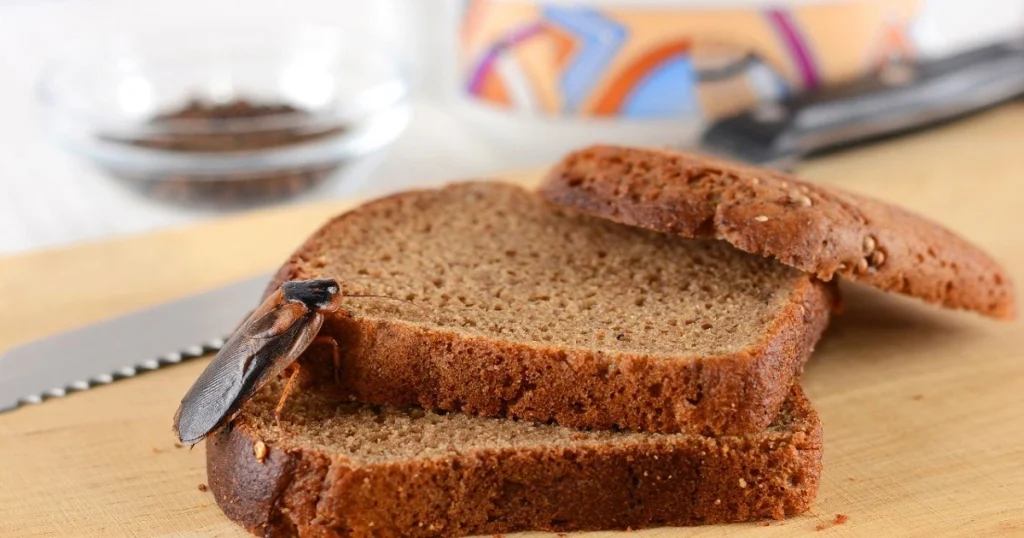
Understanding the behavioral patterns of the smoky brown cockroach provides insight into its feeding habits and activity cycles, which is important for managing infestations effectively.
Smoky brown cockroaches are omnivorous scavengers. Their diet primarily consists of decaying organic matter, food residues, and plant material. They are particularly attracted to sugary substances, starches, and meats.
These cockroaches can be found in kitchens and garbage areas where food particles are abundant. They can also feed on non-food items such as cardboard and paper, which they digest for nutrients.
While smoky brown cockroaches are not directly dangerous, they can pose health risks. They may contaminate food sources with bacteria, leading to potential foodborne illnesses. Additionally, a smoky brown cockroach nymph bite, though rare, could cause minor irritation.
Smoky brown cockroaches are nocturnal, congregating at night to forage and mate. Their peak activity occurs in the early morning and late evening hours. During the day, they prefer to hide in dark, warm areas.
Temperature and humidity significantly influence their activity. In humid environments, they may be more active, seeking moisture. Conversely, they become less active during dry conditions and can even retreat into their hiding spots.
They thrive in attics, basements, and wall voids in urban settings. Homeowners should take preventive measures to deter infestations by eliminating food sources and sealing entry points.
Controlling a smoky brown cockroach infestation requires knowledge of their common entry points and the preventative measures to reduce their presence in a home. By identifying vulnerabilities and implementing strategies, homeowners can maintain a cockroach-free environment.
Smoky brown cockroaches often enter homes through various pathways. The primary entry points include:
Regular inspection of these areas can help locate potential entry points. To minimize the risk of infestation, homeowners should seal any visible gaps with caulk or weather stripping.
Implementing effective measures can significantly reduce the chance of smoky brown cockroach infestation. Key strategies include:
Additionally, monitoring areas where cockroaches are frequently seen can help in early detection and intervention. For more severe infestations, employing traps or consulting pest control services may be necessary to ensure thorough removal.

Smoky brown cockroaches pose several health concerns. These insects can carry pathogens that may contaminate food and surfaces.
Are Smoky Brown Cockroaches Dangerous?
While they are not known to bite humans, they can still pose risks through the allergens they produce. Their droppings, shed skin, and body parts can trigger asthma and allergic reactions in sensitive individuals.
Smoky Brown Cockroach Nymph Bite
Smoky brown cockroach nymphs are unlikely to bite humans. However, if they do, the bite may cause some people minor irritation or allergic reactions.
Proper sanitation and pest control are essential to minimize the health risks associated with these pests. Keeping living areas clean will help reduce the likelihood of an infestation.
Awareness of the potential health risks can guide effective prevention strategies. Monitoring for signs of cockroach activity can lead to timely interventions.
Many people confuse the smoky brown cockroach with the American cockroach. While both belong to the same family, they have distinct features.
Another misconception is that smoky brown cockroaches are as destructive as their American counterparts. In reality, they are less likely to invade structures and cause damage.
Some believe that all cockroaches have similar lifespans. The smoky brown cockroach can live up to 1 year, while the American cockroach may live even longer under optimal conditions.
It is often thought that the smoky brown cockroach is prevalent everywhere. In fact, its distribution is mainly in the southern United States, whereas the American cockroach is found in various climates across the country.
Understanding these differences can help distinguish between the two species. Accurate identification is important for effective pest management strategies.
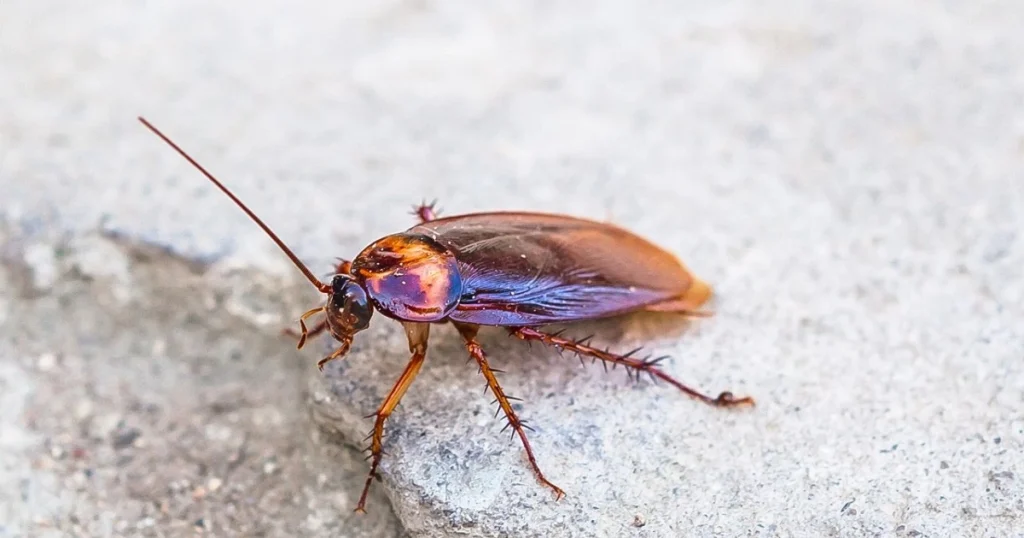
Effectively controlling and exterminating smoky brown cockroaches requires a combination of chemical treatments and natural remedies. Each approach has its own merits and can be tailored to specific situations, depending on the severity of the infestation.
Chemical treatments are common for tackling smoky brown cockroaches and their nymphs. Insecticide sprays, bait formulations, and dusts are widely used to eliminate these pests.
Homeowners should consider contacting Critter Stop at (214) 234-2616 for a free inspection. They have a fantastic reputation and online customer reviews because they provide high-quality work and great customer service.
Natural remedies can also help manage smoky brown cockroaches. While these methods may be less aggressive, they can still be effective in certain situations.
For specific guidance on managing infestations, contacting professionals like Critter Stop can provide tailored solutions.
The following addresses common questions about smoky brown cockroaches, including their behavior, identification, and control measures. Understanding these aspects can help in effectively managing encounters with this pest.
Smoky brown cockroaches are typically drawn to moisture, food sources, and dark hiding spots. Kitchens and bathrooms often provide the ideal environment for these pests.
A smoky brown cockroach nymph is characterized by its small, brown body and long antennae. Nymphs lack wings, making them distinct from adult roaches.
The presence of smoky brown nymphs indicates a potential infestation. They can contribute to the spread of allergens and may damage household items.
It's advisable to clean the area thoroughly and eliminate any food or water sources. Consider using insecticides or traps designed explicitly for roaches.
Baby smoky brown cockroaches have a distinct dark brown color and no wings. They are usually smaller than other common roach species.
Nymphs generally measure about 1/2 inch long. As they mature, they will gradually increase in size until they reach adulthood.
Smoky brown nymphs have a smooth body and lack the distinctive markings found in some other nymph species. Their coloration is also more uniform.
The growth from nymph to adult can take several months, typically 4 to 6 months. Environmental factors can influence this rate.
While they can establish infestations, smoky brown roaches are generally less common than species like the American cockroach, and their infestations may be more localized.
Effective elimination methods include using baits, traps, and professional pest control services. Ensuring proper sanitation can also mitigate their presence.
Smoky brown cockroaches are common in Texas, especially in humid areas. They thrive in warm climates, making the state an ideal habitat.
The life cycle consists of three main stages: egg, nymph, and adult. Each stage has specific characteristics and durations.
Smoky brown cockroaches and palmetto bugs are often confused due to their similarities. Both have a similar size and color, but palmetto bugs usually have lighter markings.
Smoky brown cockroaches do not pose a direct danger to humans or pets, but they can carry allergens and pathogens. Allergic reactions may occur in sensitive individuals.
Smoky brown cockroach eggs are typically found in dark, hidden areas. The egg cases, or oothecae, are brown and can contain several eggs.
While bites from smoky brown cockroach nymphs are rare, they can happen. Any bite may cause mild irritation, but medical attention is rarely needed.
One can employ insecticides, traps, and professional extermination services to manage infestations. Keeping an environment clean and dry is also crucial.
Signs include droppings, shed skins, and a musty odor. Finding live or dead roaches is a clear indication of a problem.
Adult smoky brown cockroaches typically reach about 1.5 inches in length. This size is similar to that of several other common roach species.
Smoky brown cockroaches prefer outdoor environments and may enter homes seeking food. American cockroaches are more adaptable and can thrive in various indoor settings.
The smoky brown cockroach has a more slender body and lacks the yellowish markings characteristic of the American cockroach. Their habitats also differ significantly.
Smoky brown cockroaches usually inhabit wooded areas and are often found in vegetation or leaf litter. They are more commonly seen near water sources.
Visit our Critter Library and learn more about our furry friends